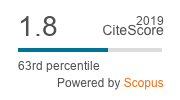Activity in the Labor Market and the Economic Crisis: Gender Differences in Galicia
Abstract
Purpose: This paper studies personal characteristics that determine labor activity in Galicia.
Design/methodology/approach: The data are from the Galician Statistics Institute (IGE) Family Living Conditions Survey (ECV). We estimate the model parameters via binary logistic regression; then we calculate the probability of activity according to various personal characteristics. We find that probability varies according to the gender. We analyze three periods: economic growth (2003), the year the economic crisis began (2007), and the economic crisis (2012).
Findings: In general, the probability of activity during the economic crisis is higher than during economic growth. We find that people enter the labor market younger during economic growth and retire later during the economic crisis. Women participate in the labor market at lower raters after the birth of their children in 2003 and in 2007; this rate rises in 2012. This is due to the high cost of childcare for families with scarce economic resources.
Research limitations/implications: Future researches could study the crisis context which reduce the gender differences in labor market.
Practical implications: The gender differences are reducing and the economic cycle plays a relevant role.
Originality/value: We show through repeating the analysis in different periods that the cycle involves different behaviors in the probability of activity by gender. Overall, during the crisis, the probability of activity are bigger and the gender differences are smaller.
Keywords
Full Text:
PDF[en]DOI: https://doi.org/10.3926/ic.543
This work is licensed under a Creative Commons Attribution 4.0 International License
Intangible Capital, 2004-2024
Online ISSN: 1697-9818; Print ISSN: 2014-3214; DL: B-33375-2004
Publisher: OmniaScience








